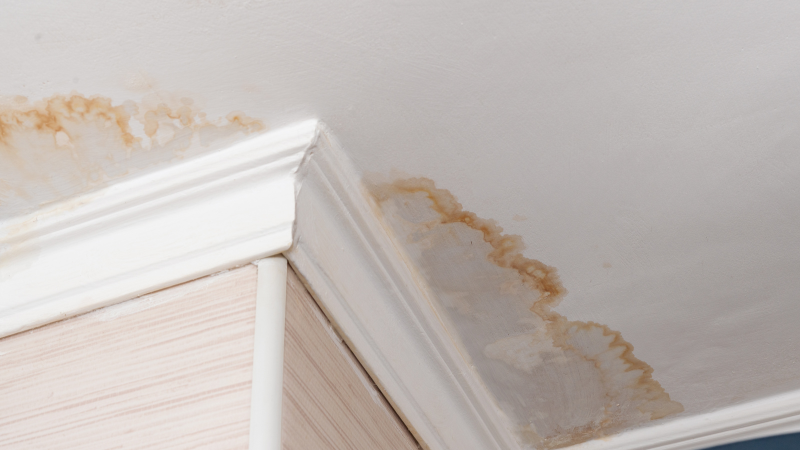Searching for Indications of Water Damage in the Bathroom
Searching for Indications of Water Damage in the Bathroom
Blog Article
How do you actually feel about Preventing Water Damage in the Bathroom?

The shower room is very susceptible for moist accumulation and also potential water damages because of the regular use water in it. This short article offers straightforward assessment methods to assist detecting water damages hazards.
The constant use water in the bathroom makes it exceptionally susceptible for moist build-up and possible water damages. By evaluating it frequently, you can lower water relevant damages.
The adhering to collection of evaluations is simple to do as well as must be done when in every three months in order to keep your restroom healthy and to stop potential water problems caused by the tub, the shower, pipeline joints and also plumbing, sinks, cupboards, and the bathroom
Do not disregard executing these examinations as well as be extensive while performing them. Remember that these simple evaluations can save you a great deal of money by offering very early signs for water damages
Bathtub and Shower
The shower and bathtub need unique focus and upkeep. Examine the ceramic tiles as well as change if broken. See to it that there is no missing out on grout between the ceramic tiles. Examine and also change cracked caulking at joints where the wall surfaces satisfy the flooring or the bathtub. Blocked drains as well as pipelines troubles will stop the bathtub from drying out and also may suggest serious troubles below the bathtub. Consult with a specialist right away to avoid structural damages. Focus on discolorations or soft locations around the tub wall surfaces as they may indicate an inner leak.
Plumbing
Signs for water damages are hard to find since most pipelines are mounted inside the wall surfaces.
Pay unique attention to flooring as well as walls dampness as well as stains as they may suggest an unnoticeable plumbing problem. Check moisture degrees in adjacent spaces also.
Sinks and Cabinets
Sinks and cupboards are subjected to moisture and also humidity everyday as well as are usually ignored. Evaluate routinely under the sink as well as on the countertop over it. Fix any drip in the catch as it may suggest drainpipe problems. Browse the sink, slow draining pipelines may suggest an obstructed drain. Replace sink seals if they are fractured or loose.
The Bathroom
The commode is a vulnerable water junction. Inspect the water lines and also search for leaks around the bathroom seat, in the tube, and under the water storage tank. If you identify any indications of wetness on the flooring around the toilet, check for leaks in the toilet edge and also tank seals.
Be aware that hanging bathroom bowl antiperspirants boosts the opportunities for obstructions.
Water Damage Signs In The Bathroom To Avoid Cleanup
Musty smell
This is one of the easiest signs to catch because musty smells are so odorous. The damp, earthy, moldy smell should be a big red flag. The smell will develop when moisture gets trapped in surfaces, and begins to facilitate mold growth. Leaking pipes under cabinets, inside walls, and behind shower fixtures will cause moisture to stay trapped and not dry, which will lead to mold growth and spread. As soon as you notice any musty smells in your bathroom, have it checked for hidden water damage and cleanup signs.
Visible mold
If the smell isn’t there to give it away, sometimes you will actually see mold growth. Finding mold in your bathroom is a serious problem, because mold is very harmful to your health. By the time mold growth is visible, it also means that water damage has already occurred and been present for some time. The only way the mold problem can be resolved is to find the source of the moisture and get it stopped. To safely and adequately remove mold, you need to have professionals handle the remediation. Do not waste any time in getting mold problems addressed, fixed, and sanitized so that you can protect you and your family from the many respiratory symptoms caused by mold exposure.
Damaged floors
Bathroom floors should be able to withstand some exposure to water while still remaining in good condition. However, when excess exposure or water leaks occur, they will begin to damage even the most water-resistant flooring. If you notice any cracking, bubbling, staining, or warping on your bathroom floors, there is probably a water leak somewhere causing the distortion. If you notice areas of the floor have become softer, or even have a spongy feeling, there is probably damage to the subfloor. Subflooring is typically made up of plywood. When plywood is exposed to water or moisture, it will absorb it. Once it has become saturated, the weight of the excess water will cause the wood to swell and soften. Check the floors in your bathroom frequently to catch any of these sings before they lead to damaged subflooring.
Changes on walls
When water leaks behind walls, it will cause changes in the drywall. Peeling plaster, blistering paint, and soggy wallpaper are all good indicators that excess water is building up behind the wall. Water leaking behind drywall will cause it to swell and be soft to the tough. If you start to notice gaps along the trim of your walls, or where tile meets the wall, it could also be a strong indicator that there is a leak behind the wall. Any changes, distortion, or damage on the walls should be evaluated as soon as you notice it to prevent further water damage and cleanup.

I have been very intrigued by Preventing Water Damage in the Bathroom and I'm hoping you enjoyed reading my blog post. Enjoyed reading our review? Please share it. Help somebody else discover it. Thanks for your time spent reading it.
Click For More Information Report this page